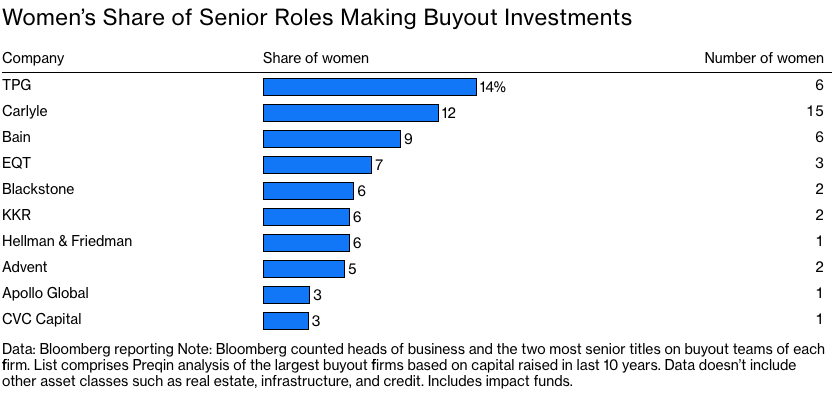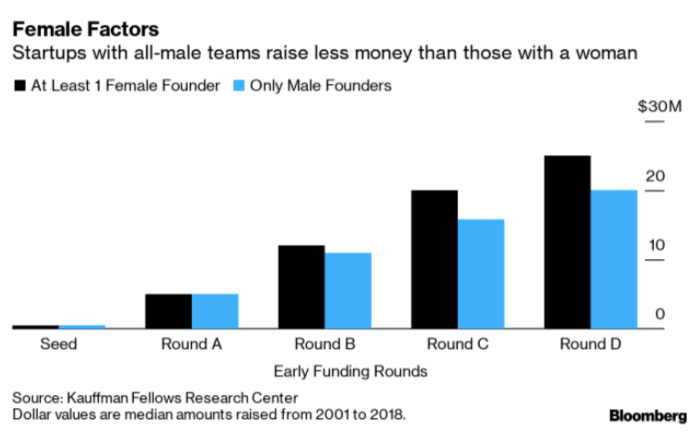Discover how to enhance decision-making in your organization by focusing on three crucial areas: solving the right problem, gathering all the available information, and understanding the intent. Learn to empower your team, foster a purpose-driven culture, and improve organizational clarity for better decision-making.

Want to Improve, Put Women in the C-Suite
At the end of last year, there was a male-to-female ratio of 19:1 for CEOs and 6.5:1 for CFOs, which exposes a persisting underrepresentation of females in key executive positions. Within my Vistage groups, I am pleased to say that the male-to-female ratio is 11:3 for CEOs. However, that aside, some recent articles have shown the superior performance of companies that have women in C-Suite positions that are typically not reserved for females.
According to a study by S&P Global Market Intelligence, if you are looking for better returns, hire a female CFO! Companies that hired female CFOs saw, on average, a 6% increase in profits and an 8% better stock returns compared with the performance under male predecessors. The 6% increase in profits accounted for an additional $1.8 trillion in additional cumulative profits across 6,000 companies.

Thus, female CEOs drove more value appreciation, improved stock price momentum, better-defended profitability moats, and delivered excess risk-adjusted returns for their firms.
However, a new study by HEC Paris Business School and MVision Private Equity Advisers found that investment committees of private equity fund managers comprising both males and females have experienced comparatively higher returns compared to their male-only peers. Therefore, if PE firms want to outperform their peers, they should appoint more women to their investment committees. The diverse investment committees well outperformed their male-only counterparts! Professor Oliver Gottschalg found that on average, companies in the top quartile for gender diversity on executive teams were 21% more likely to outperform their peers, and 27% more likely to exhibit substantial value creation. Specifically, his research found that gender-diverse investment committees outperformed all-male committees in alpha, TVPI, and IRR by 7%, 0.52%, and 12%, respectively. The level outperformance is due to a broader base of perspectives and the subsequent avoidance of more blind spots!
So what is of interest is that while women’s participation in Investment Committees results in outperformance, Private Equity never received the memo. As can be seen from the chart below, women are very under-represented in the major Private Equity Groups

Not only that, Bloomberg has found that startups with all-male teams raise less money than those with a woman. Therefore, you would think all startups would be looking for female teammates. Unfortunately, many are run by men who “know best.”

Thus, while I am the first to say that correlation does not necessarily mean causality, there undoubtedly enough data to say, “If you want to realize above-average performance, put women in your C-Suite!”
This has to be one of the easiest things to improve your performance and make better decisions. If you say, “We just can’t find them,” you are not looking in the right place.
Copyright (c) 2019, Marc A. Borrelli
Recent Posts
Boosting Common Sense Decision-Making in Your Organization
Do You Understand Your Costs to Ensure Profitability?
You can only determine profitability when you know your costs. I’ve discussed before that you should price according to value, not hours. However, you still need to know your costs to understand the minimum pricing and how it is performing. Do you consider each jobs’ profitability when you price new jobs? Do you know what you should be charging to ensure you hit your profit targets? These discussions about a company’s profitability, and what measure drives profit, are critical for your organization.
Sunk Costs Are Just That, Sunk!
If you were starting your business today, what would you do differently? This thought-provoking question is a valuable exercise, especially when it brings up the idea of “sunk costs” and how they limit us. A sunk cost is a payment or investment that has already been made. Since it is unrecoverable no matter what, a sunk cost shouldn’t be factored into any future decisions. However, we’re all familiar with the sunk cost fallacy: behavior driven by a past expenditure that isn’t recoupable, regardless of future actions.
Do You REALLY Know Your Business Model?
Bringing clarity to your organization is a common theme on The Disruption! blog. Defining your business model is a worthwhile exercise for any leadership team. But how do you even begin to bring clarity into your operations? If you’re looking for a place to start, Josh Kaufman’s “Five Parts of Every Business” offers an excellent framework. Kaufman defines five parts of every business model that all flow into the next, breaking it down into Value Creation, Marketing, Sales, Value Delivery, and Finance.
Ideation! Harder Than It Sounds
Bringing in new ideas, thoughts, understanding, and logic is key as your organization faces the challenges of a changing environment. But when you do an ideation session in your organization… how does it go? For so many organizations, many times, after a few ideas have been thrown out and rejected, the thought process slows down very quickly, and a form of hopelessness takes over. How does your organization have better ideation? I’ve come across a new approach with a few teams lately.
Recruit, Recruit, Recruit!
An uptick in business has begun this quarter, and companies are rushing to hire to meet this surge in demand. What amazes me is how many are so unprepared to hire. Continual recruiting is key to the survival of a company. It isn’t the same thing as hiring—continuous recruiting is building a pipeline of people that you would hire if you needed to fill a position, or “A players” you would hire if they were available.
We All Need Clarity
If your organization is focused on obscurity over clarity, whether intentionally or not, your “A” player employees are vulnerable. There is a looming talent crunch. As we start to emerge from COVID, demand is increasing, and many are scrambling to fill positions to meet that demand. Headhunters and recruiters are soon going to be calling your key “A” employees. Have you been giving them a reason to stay?
Not Another **** Meeting
As Leonard Bernstein put it so well, “To achieve great things, two things are needed: a plan and not quite enough time.” Your meetings can be shorter, more fruitful, and engaging, with better outcomes for the organization, employees, and managers. It’s time to examine your meeting rhythms and how you set meeting agendas. This week, I break down daily, weekly, monthly, quarterly, annual, and individual meeting rhythms, with sample agendas for each.
Is Your Company Scalable?
Let’s start here: Why should your company be scalable at all? If your business is scalable, you have business freedom–freedom with time, money, and options. Many business leaders get stuck in the “owner’s trap”, where you need to do everything yourself. Sound familiar? If you want a scalable business that gives you freedom, you need to be intentional about what you sell, and how.
Are you ready for the Talent Crunch?
Companies are gearing up to hire. Unfortunately, many are competing within the same talent pool. Some experts are currently predicting a strong economic recovery starting in May or June. But as the economy booms, there is going to be fierce competition for talent. How will you fare in the looming talent crisis? Your organization should be creating a plan, now, so you can attract the talent you need in the year ahead.










